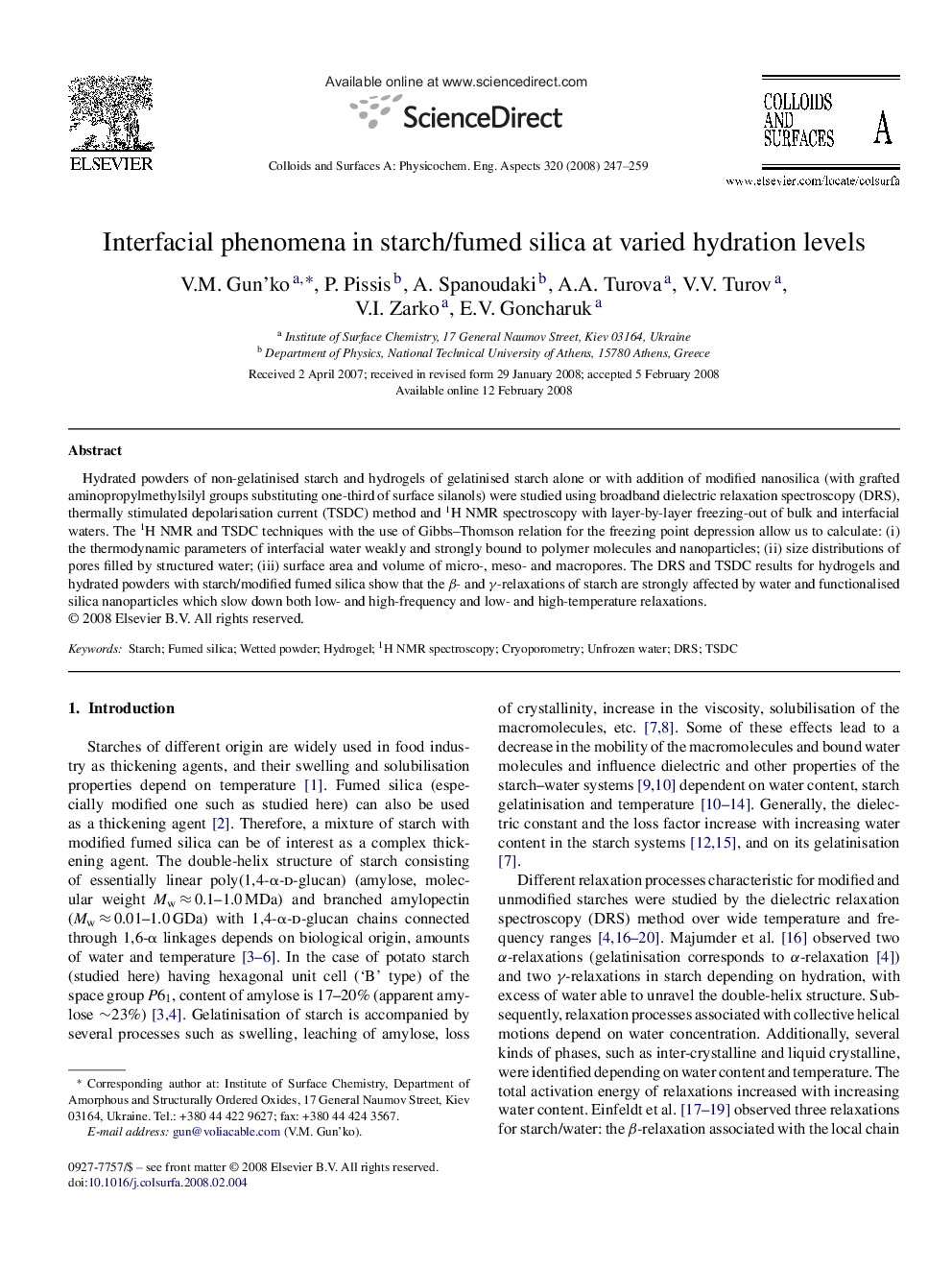| Article ID | Journal | Published Year | Pages | File Type |
|---|---|---|---|---|
| 596757 | Colloids and Surfaces A: Physicochemical and Engineering Aspects | 2008 | 13 Pages |
Hydrated powders of non-gelatinised starch and hydrogels of gelatinised starch alone or with addition of modified nanosilica (with grafted aminopropylmethylsilyl groups substituting one-third of surface silanols) were studied using broadband dielectric relaxation spectroscopy (DRS), thermally stimulated depolarisation current (TSDC) method and 1H NMR spectroscopy with layer-by-layer freezing-out of bulk and interfacial waters. The 1H NMR and TSDC techniques with the use of Gibbs–Thomson relation for the freezing point depression allow us to calculate: (i) the thermodynamic parameters of interfacial water weakly and strongly bound to polymer molecules and nanoparticles; (ii) size distributions of pores filled by structured water; (iii) surface area and volume of micro-, meso- and macropores. The DRS and TSDC results for hydrogels and hydrated powders with starch/modified fumed silica show that the β- and γ-relaxations of starch are strongly affected by water and functionalised silica nanoparticles which slow down both low- and high-frequency and low- and high-temperature relaxations.
